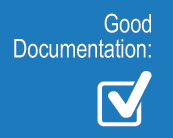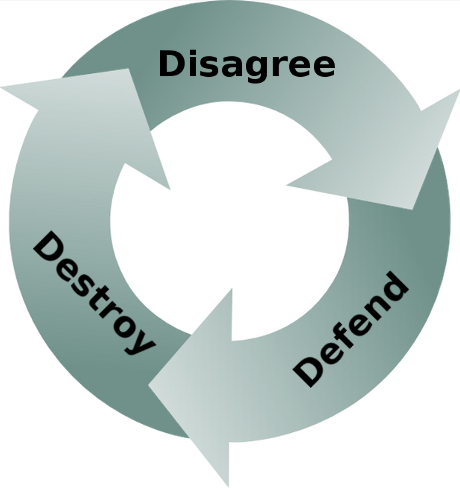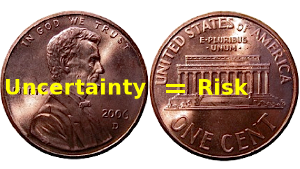Alistair Cockburn says “A user story is to a use case as a gazelle is to a gazebo“.
If you are extremely familiar with both techniques then this makes sense. If you are not familiar with both then suffice it to say that you can put a gazelle in a gazebo but not vice versa.
A user story is of the form As a <type of user>, I want <some goal> so that <some reason> (see here).
A use case for withdraw money has many more components to it, and a skeleton of such a use case can be found here. I develop this skeleton use case in a four part tutorial:
- Part 1: Use case as a dialog
- Part 2: What is an actor?
- Part 3: Adding interface details
- Part 4: Adding application context
The above user story is only a part of the entire use case. For an ATM, a user story might be As a user, I want to withdraw money so that I can have physical cash. This user story is only the summary of the withdraw money use case without the details.
 User stories come from the Extreme Programming methodology where the assumption was that there will be a high degree of interaction between the developers and the end customer and that QA will largely be done through test driven development. It is important to realize that Extreme Programming does not scale.
User stories come from the Extreme Programming methodology where the assumption was that there will be a high degree of interaction between the developers and the end customer and that QA will largely be done through test driven development. It is important to realize that Extreme Programming does not scale.
Once your development team gets large, i.e. you have 3+ agile teams and your code base gets large enough to warrant a formal testing environment, then you will outgrow user stories as your only  method of capturing requirements. You can still use user stories for new modules
method of capturing requirements. You can still use user stories for new modules
developed with an end customer to take advantage of the light weight and rapid nature of user stories, but at some point those user stories should transition to use cases.
Unfortunately, there are quite a few ways to build use cases and not all of them are effective. Alistair Cockburn’s method (found here) is an excellent way to capture use cases for more sophisticated systems. There is no doubt that a full use cases is heavier weight than a user story, but consider this:
- Use cases can more easily be turned into test cases by QA
- With use cases you more easily prove that you have all the requirements
- Use cases annotated with screens and reports can be used to collaborate with remote off site customers
- Well written use cases can easily be broken up into a sprint back log
- Use cases will work if you are not using Agile development methods
 So don’t forgo the speed and dynamic nature of user stories, just recognize that there are limits to user stories and that you will need to transition to use cases when your project team or application grows.
So don’t forgo the speed and dynamic nature of user stories, just recognize that there are limits to user stories and that you will need to transition to use cases when your project team or application grows.

 We often hear
We often hear  Recognizing bad customers is usually not difficult.
Recognizing bad customers is usually not difficult.  When sales executives chase all opportunities hoping for a sale is when transactional buyers are courted and you get pulled into pricing concessions from demanding customers. The problem is demanding transactional buyers won’t just ask for the best price, they will also ask for product changes.
When sales executives chase all opportunities hoping for a sale is when transactional buyers are courted and you get pulled into pricing concessions from demanding customers. The problem is demanding transactional buyers won’t just ask for the best price, they will also ask for product changes. Good sales people understand these principles and don’t chase bad customers. But, there are not enough good sales people to go around, so virtually every company has a less-than-excellent sales person making trouble for product management and engineering.
Good sales people understand these principles and don’t chase bad customers. But, there are not enough good sales people to go around, so virtually every company has a less-than-excellent sales person making trouble for product management and engineering. If you find yourself in a position where you have acquired one or more bad customers (you know who they are..) then your best course of action is to find some way to send them to your competitors. This will increase your profitability and reduce the stress of unreasonable requests flooding into product management and engineering.
If you find yourself in a position where you have acquired one or more bad customers (you know who they are..) then your best course of action is to find some way to send them to your competitors. This will increase your profitability and reduce the stress of unreasonable requests flooding into product management and engineering. Don’t be afraid to let unprofitable and non-strategic customers go. You will feel less stressed and be better off in the long run.
Don’t be afraid to let unprofitable and non-strategic customers go. You will feel less stressed and be better off in the long run.

 Time pressures to make a sale put us under pressure and this stress leads to making quick decisions about whether a product or solution can be sold to a customer. We listen to the customer but interpret everything he says according to the products and solutions that we have.
Time pressures to make a sale put us under pressure and this stress leads to making quick decisions about whether a product or solution can be sold to a customer. We listen to the customer but interpret everything he says according to the products and solutions that we have. We hear the word car and we think that we know what the customer means. The order-taker sales person will spring into action and sell what he thinks the customer needs. Behind the word car is an implied usage and unless you can ferret out the meaning that the customer has in mind, you are unlikely to sell the correct solution.
We hear the word car and we think that we know what the customer means. The order-taker sales person will spring into action and sell what he thinks the customer needs. Behind the word car is an implied usage and unless you can ferret out the meaning that the customer has in mind, you are unlikely to sell the correct solution. Sometimes heroic actions by the product management, professional services, and software development teams lead to a successful implementation, but usually not until there has been severe pain at the customer and midnight oil burned in your company. You can eventually be successful but that customer will never buy from you again.
Sometimes heroic actions by the product management, professional services, and software development teams lead to a successful implementation, but usually not until there has been severe pain at the customer and midnight oil burned in your company. You can eventually be successful but that customer will never buy from you again. Selling the correct solution to the customer requires that you understand the customer’s problem before you sell the solution.
Selling the correct solution to the customer requires that you understand the customer’s problem before you sell the solution. Opinions vary on whether a project manager needs to have domain experience. Certainly project managers that do not have domain experience will be the first to say that domain experience is not necessary as long as they have access to excellent subject matter experts.
Opinions vary on whether a project manager needs to have domain experience. Certainly project managers that do not have domain experience will be the first to say that domain experience is not necessary as long as they have access to excellent subject matter experts. I am currently involved in a project that involves a LAN/WAN/WIFI upgrade of a large customer for a large telecommunications company. The project manager does not have domain expertise in networks and is counting on the subject matter experts to provide him sufficient input to execute the project.
I am currently involved in a project that involves a LAN/WAN/WIFI upgrade of a large customer for a large telecommunications company. The project manager does not have domain expertise in networks and is counting on the subject matter experts to provide him sufficient input to execute the project. In the distant past ,I was part of a team that was building a mobile POS terminal that worked over cellular (GSM, CDMA). The project manager in this situation did not have domain experience and was counting on the subject matter experts. In this case, the subject matter experts were very good at general design, but not experts in building cellular devices.
In the distant past ,I was part of a team that was building a mobile POS terminal that worked over cellular (GSM, CDMA). The project manager in this situation did not have domain experience and was counting on the subject matter experts. In this case, the subject matter experts were very good at general design, but not experts in building cellular devices. So if a project does not have many uncertainties and dependencies then it is extremely likely that the project manager does not require domain experience and can rely to some degree on his subject matter experts.
So if a project does not have many uncertainties and dependencies then it is extremely likely that the project manager does not require domain experience and can rely to some degree on his subject matter experts. This is like when
This is like when  The documentation actually helps to understand the program
The documentation actually helps to understand the program The interesting thing is that developers are fairly disciplined about using version control systems, yet there is a complete lack of discipline (in general) when it comes to documentation.
The interesting thing is that developers are fairly disciplined about using version control systems, yet there is a complete lack of discipline (in general) when it comes to documentation. The only time that you are thinking about what you are trying to do is before you have written the code. This is clearly the best time to write the documentation. The problem is that developers move from thinking about how to solve a problem to getting their hands on the keyboard to write code to solve the problem. In the blink of an eye the programmer switches modes and gets caught up in trying to solve the problem.
The only time that you are thinking about what you are trying to do is before you have written the code. This is clearly the best time to write the documentation. The problem is that developers move from thinking about how to solve a problem to getting their hands on the keyboard to write code to solve the problem. In the blink of an eye the programmer switches modes and gets caught up in trying to solve the problem. Good documentation requires just as much (if not more) thinking than what is required to solve the problem. Much of the time people don’t have a good idea of what problem they are solving. By truly spending time on figuring out what you have to solve, then documenting it, sounds like it would take longer — but you will be surprised to find out that this actually saves time.
Good documentation requires just as much (if not more) thinking than what is required to solve the problem. Much of the time people don’t have a good idea of what problem they are solving. By truly spending time on figuring out what you have to solve, then documenting it, sounds like it would take longer — but you will be surprised to find out that this actually saves time.
 You can see a couple, but only few people can see the entire forest by just looking at the code. For the rest of us, diagrams are the way to see the forest, and UML is the standard for diagrams.
You can see a couple, but only few people can see the entire forest by just looking at the code. For the rest of us, diagrams are the way to see the forest, and UML is the standard for diagrams. Contrast that with software where UML diagrams are rarely produced, or if they are produced, they are produced as an after thought. The irony is that the people pushing to build the architecture quickly say that there is no time to make diagrams, but they are the first people to complain when the architecture sucks. UML is key to planning (see
Contrast that with software where UML diagrams are rarely produced, or if they are produced, they are produced as an after thought. The irony is that the people pushing to build the architecture quickly say that there is no time to make diagrams, but they are the first people to complain when the architecture sucks. UML is key to planning (see  Yet this is where all the architecture is. Good architecture makes all the difference in medium and large systems. Architecture is the glue that holds the software components in place and defines communication through the structure. If you don’t plan the layers and modules of the system then you will continually be making compromises later on.
Yet this is where all the architecture is. Good architecture makes all the difference in medium and large systems. Architecture is the glue that holds the software components in place and defines communication through the structure. If you don’t plan the layers and modules of the system then you will continually be making compromises later on. Good diagrams, in particular UML, allow you to abstract away all the low level details of an implementation and let you focus on planning the architecture. This higher level planning leads to better architecture and therefore better extensibility and maintainability of software.
Good diagrams, in particular UML, allow you to abstract away all the low level details of an implementation and let you focus on planning the architecture. This higher level planning leads to better architecture and therefore better extensibility and maintainability of software. These analysis level UML diagrams will help you to identify gaps in the requirements before moving to design. This way you can send your BAs and product managers back to collect missing requirements when you identify missing elements before you get too far down the road.
These analysis level UML diagrams will help you to identify gaps in the requirements before moving to design. This way you can send your BAs and product managers back to collect missing requirements when you identify missing elements before you get too far down the road. Extreme programming (XP) introduced most people to pair programming.
Extreme programming (XP) introduced most people to pair programming. New Team Members
New Team Members



 If things get out of hand then people start taking sides and productivity takes a major hit. In the worst conflicts this leads to loss of key personnel, which has been measured to be:
If things get out of hand then people start taking sides and productivity takes a major hit. In the worst conflicts this leads to loss of key personnel, which has been measured to be:


 When executives
When executives



